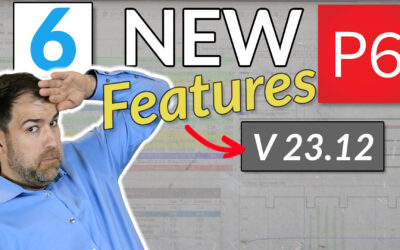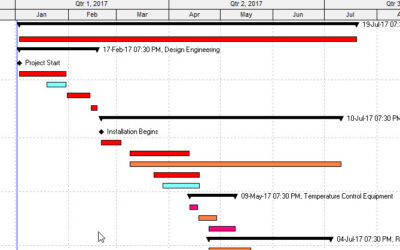4 Reasons Users Might Refuse to Use Your Integrated Primavera P6 System
I remember a gift I bought my parents once – a motorized corkscrew that promised to make opening a bottle of Chardonnay a cinch. When visiting once, I noticed it was tucked away at the back of a cupboard. I found out later it was used only twice. To my dismay, the pricey device had some fatal flaws – the button was too hard to press and hold. But the clincher was that it took about 65 seconds to open a bottle, as compared to 5 seconds with regular corkscrew.
Gadgets are often throwaway, but in my experience this phenomenon of poor design happens in the schedule software world just as easily.
Integrating your financial system with Primavera P6 seems to make a lot of business sense. At this year’s Collaborate14 Oracle User’s conference held mid-April in Las Vegas, there were some great sessions on integrating financials with Oracle Primavera P6 – and some great success stories too.
It does seem to make good sense.
Since P6 is not a very strong project cost management tool, just pull in cost information to P6 from your cost system. The ultimate goal is unified cost and schedule in 1 system – a holistic view in one place that is automated, no tedious spreadsheets or cutting and pasting.
But it’s been my experience that if you’re not careful, you may be building a system that your end-users will want to toss into a dark cupboard somewhere, hoping you’ll forget about the whole thing next time you drop in for a visit.
For those that are considering or are already in the process of integrating Oracle Primavera P6 with a financial system, here are 4 reasons your end-users may not want to curl up and hide, rather than use the new system.
1 – It’s Too Complicated
Exerpt from user training manual:
“First start in SAP, then set your project ID, request an admin to sync the data. Then goto Primavera P6, set your WBS, but don’t use any numeric characters – it won’t sync, then request a sync from an admin. Then back in SAP, create your Work Orders, but don’t set dates. Set dates in Primavera P6…….”
If you need a PhD and the patience of a monk to use the system, then it’s too complicated.
Users will abandon any system that is too taxing to figure out and too hard to use – especially integrated systems where data flows from one system to another in a way that may not be obvious for the user.
Often in integrated Primavera P6 cost and schedule systems, users will have to perform specific tasks in each system – like adding and editing WBS only in SAP, for example, even though natively you can edit WBS in Primavera P6. The added workflow rules an integration typically brings may just baffle your users.
2 – They Don’t Have Time
Are you busy at work? Understatement of the year?
How would you feel if your boss insisted that you learn how to code in Java effective immediately and that Java development would be a regular part of your daily duties? Oh yeah, you’ll start coding immediately after some training but we’ll need to see your code quickly so it can rollup into the executive dashboard.
Now assuming you’re not a coder, but a project scheduler working on a bunch of intense projects, your new coding responsibilities would likely have you sweating.
You would probably be asking:
How can I possibly find time to learn something so complex while still getting my regular work (aka your job) done?
Your schedulers might ask the same question when you rollout an integrated Primavera P6 system. Will they have the time to learn it? Will they be given time to master it?
3 – They don’t care about integrating schedule and cost
Do your users have buy-in for your proposed integration of Primavera P6?
Do they have a cause they can rally behind? Something that will benefit THEM.
A lot of companies position an integrated Primavera P6 cost and schedule system as benefiting primarily the managers and executives. It true, they will be able to get unparalleled unified reporting, have one central source for project data, and as a result be more strategic in managing the business. These factors are definitely important, but are heavily one-sided.
What’s in it for the USERS?
Your users are the force behind the flow of project data that drives the business.
Most users don’t care about integrating Primavera P6 and your financial system. They probably liked the way things were – the systems worked fine in their eyes before they were integrated.
If your users don’t have some motivating benefits for changing their behaviours, your integration rollout will likely be met with resistance. And you will have users who resent being forced to use a system that requires a lot more work to function.
4 – You tried to teach them everything in one Training course
The 3 or 5-day Introduction to Primavera P6 training course has become a standard around the world.
But in the case of a complex Primavera P6 integration, you don’t want to overwhelm your users by delivering a whopping amount of content in a short period of time – as cost-effective as it might seem.
We all learn in chunks. We take a process that we’ve just been taught and we try it a few times and then integrate it into our own daily routine.
Without access to continuous learning tools that provide users with a curriculum for learning over time, your users won’t be able to remember and integrate all that they’ve learned into new behaviours. And then they won’t change their behaviours and your integrated Primavera P6 system won’t get much use.






